Serving 2,225 students in grades 10-12, Davis High School ranks in the top 20% of all schools in Utah for overall test scores (math proficiency is top 30%, and reading proficiency is top 30%).
The percentage of students achieving proficiency in math is 51% (which is higher than the Utah state average of 39%). The percentage of students achieving proficiency in reading/language arts is 60% (which is higher than the Utah state average of 43%).
The student:teacher ratio of 26:1 is higher than the Utah state level of 21:1.
Minority enrollment is 11% of the student body (majority Hispanic), which is lower than the Utah state average of 29% (majority Hispanic).
Quick Stats (2025)
- Grades: 10-12
- Enrollment: 2,225 students
- Student:Teacher Ratio: 26:1
- Minority Enrollment: 11%
- Graduation Rate: 96% (Top 10% in UT)
- Overall Testing Rank: Top 20%
- Math Proficiency: 51% (Top 30%)
- Reading Proficiency: 60% (Top 10%)
- Science Proficiency: 41% (Btm 50%)
- Source: National Center for Education Statistics (NCES), UT Dept. of Education
Top Rankings
Davis High School ranks among the top 20% of public schools in Utah for:
Category
Attribute
Overall Rank
Reading/Language Arts Proficiency
Graduation Rate
School Overview
Davis High School's student population of 2,225 students has grown by 7% over five school years.
The teacher population of 86 teachers has stayed relatively flat over five school years.
Grades Offered
Grades 10-12
Total Students
2,225 students
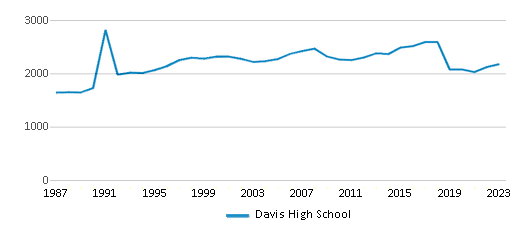
Gender %
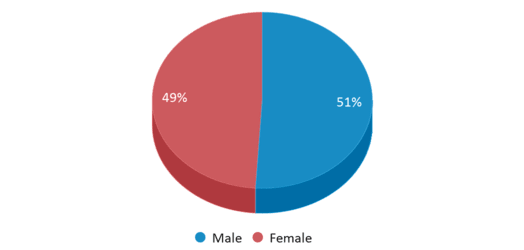
Total Classroom Teachers
86 teachers

Students by Grade
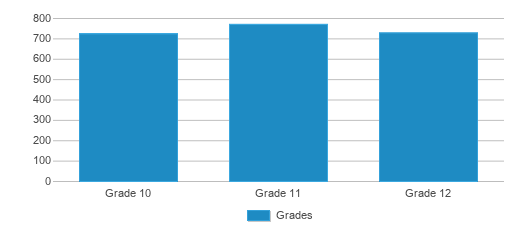
School Rankings
Davis High School ranks within the top 20% of all 975 schools in Utah (based off of combined math and reading proficiency testing data).
The diversity score of Davis High School is 0.21, which is less than the diversity score at state average of 0.46. The school's diversity has stayed relatively flat over five school years.
Overall Testing Rank
#132 out of 975 schools
(Top 20%)
(Top 20%)
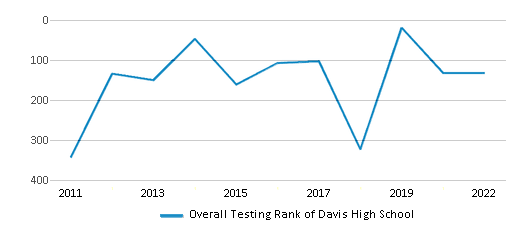
Math Test Scores (% Proficient)
(20-21)51%
39%
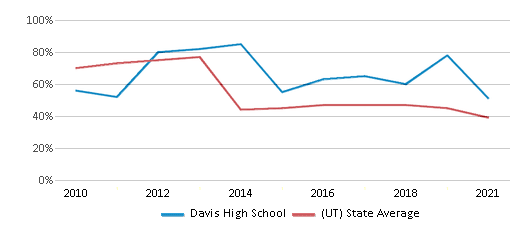
Reading/Language Arts Test Scores (% Proficient)
(20-21)60%
43%
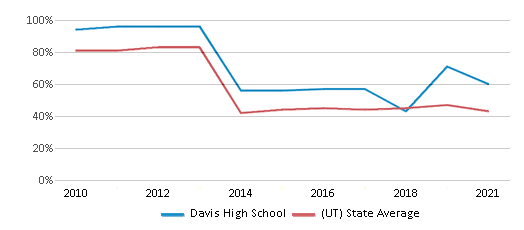
Science Test Scores (% Proficient)
(20-21)41%
45%
Student : Teacher Ratio
26:1
21:1
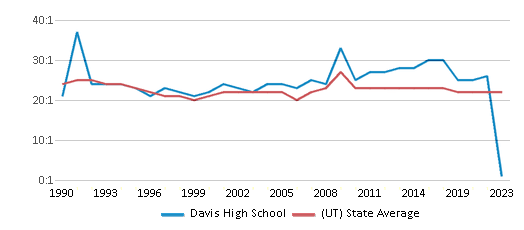
American Indian
n/a
1%
Asian
1%
2%
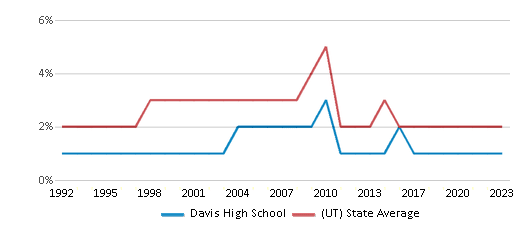
Hispanic
6%
20%
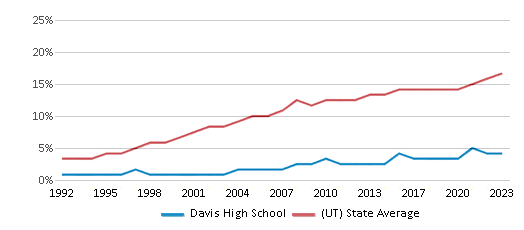
Black
1%
1%
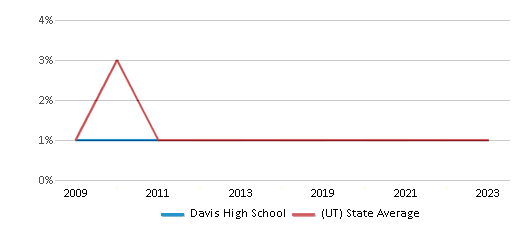
White
89%
71%
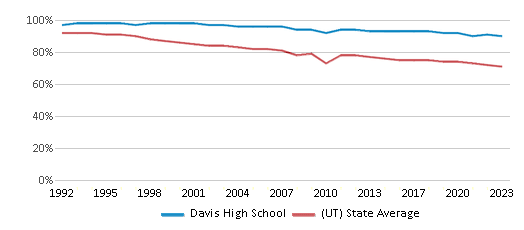
Hawaiian
1%
1%
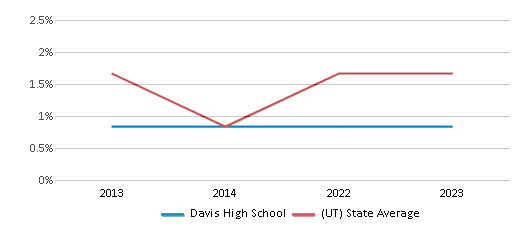
Two or more races
2%
4%
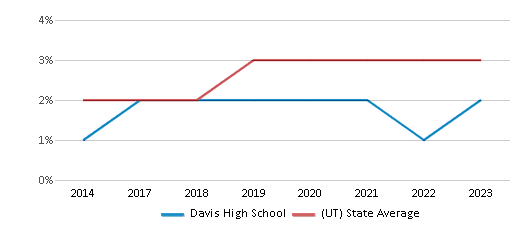
All Ethnic Groups
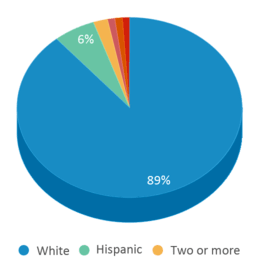
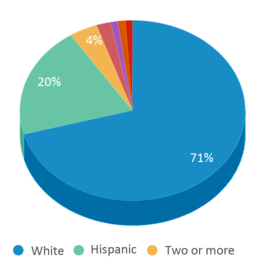
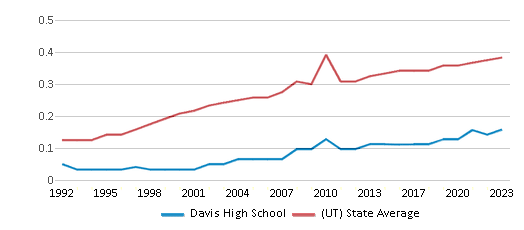
Graduation Rate
96%
88%
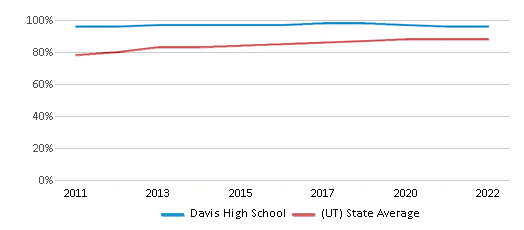
Eligible for Free Lunch
7%
24%
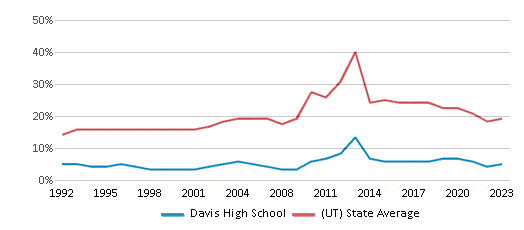
Eligible for Reduced Lunch
1%
6%
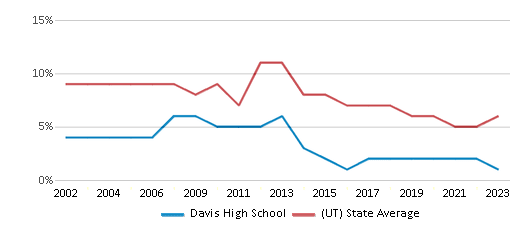
School Statewide Testing
School District Name
Source: National Center for Education Statistics (NCES), UT Dept. of Education
Profile last updated: 02/09/2025
Frequently Asked Questions
What is Davis High School's ranking?
Davis High School is ranked #132 out of 975 schools, which ranks it among the top 20% of public schools in Utah.
What schools are Davis High School often compared to?
Davis High Schoolis often viewed alongside schools like Layton High School by visitors of our site.
What percent of students have achieved state testing proficiency in math and reading?
51% of students have achieved math proficiency (compared to the 39% UT state average), while 60% of students have achieved reading proficiency (compared to the 43% UT state average).
What is the graduation rate of Davis High School?
The graduation rate of Davis High School is 96%, which is higher than the Utah state average of 88%.
How many students attend Davis High School?
2,225 students attend Davis High School.
What is the racial composition of the student body?
89% of Davis High School students are White, 6% of students are Hispanic, 2% of students are Two or more races, 1% of students are Asian, 1% of students are Black, and 1% of students are Hawaiian.
What is the student:teacher ratio of Davis High School?
Davis High School has a student ration of 26:1, which is higher than the Utah state average of 21:1.
What grades does Davis High School offer ?
Davis High School offers enrollment in grades 10-12
What school district is Davis High School part of?
Davis High School is part of Davis School District.
School Reviews
1 5/17/2021
Their robotics team is abrasive and hard to work with. The school environment is toxic and they teach bad behavior.
5 3/2/2011
I loved this school. It was the second high school I went to and it was my favorite. The academics were awesome. I took 6 AP classes my senior year and the teachers all were willing to work with us and wanted us to pass the exams. The math department is fantastic they have a near 100% pass rate for the last 10 years or something close to that. I know everyone passed both Calculus AB and BC (depending on which ones they took) the year took those exams (my junior year). The building itself is awesome. My only complaint is the single doors and narrow stairways that we were trying to squeeze a ton of students out of during firedrills and between classes, but it wasn't too bad, you just learned quickly which routes were the quickest and there was plenty of time.
Review Davis High School. Reviews should be a few sentences in length. Please include any comments on:
- Quality of academic programs, teachers, and facilities
- Availability of music, art, sports and other extracurricular activities
Recent Articles

What Is A Charter School?
Explore the world of charter schools in this comprehensive guide. Learn about their history, how they operate, and the pros and cons of this educational innovation. Discover key facts about charter schools, including admission policies, demographics, and funding, as well as what to look for when considering a charter school for your child.

10 Reasons Why High School Sports Benefit Students
Discover the 10 compelling reasons why high school sports are beneficial for students. This comprehensive article explores how athletics enhance academic performance, foster personal growth, and develop crucial life skills. From improved fitness and time management to leadership development and community representation, learn why participating in high school sports can be a game-changer for students' overall success and well-being.

February 05, 2025
Understanding the U.S. Department of Education: Structure, Impact, and EvolutionWe explore how the Department of Education shapes American education, from its cabinet-level leadership to its impact on millions of students, written for general audiences seeking clarity on this vital institution.





